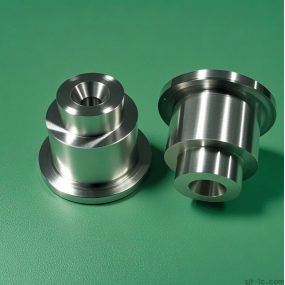The processing steps for sheet metal parts are: product pre testing, product processing trial production, and mass production of products. During the product processing and trial production steps, timely communication and contact with customers should be made to obtain corresponding processing evaluations before proceeding with mass production of the product.
Laser drilling technology is the earliest practical laser technology in laser material processing technology. Laser drilling in sheet metal workshops generally uses pulsed laser, which has high energy density and short time. It can process small holes of 1 μ m, especially suitable for processing small holes with certain angles and thin materials. It is also suitable for processing deep small holes and micro holes on parts with high strength, hardness or brittle soft materials.
Laser can achieve drilling and processing of burner components for gas turbines, and the drilling effect can be three-dimensional, with a quantity of up to thousands. The materials that can be drilled include stainless steel, nickel chromium iron alloy, and Hastelloy based alloy. Laser drilling technology is not affected by the mechanical properties of materials and is relatively easy to achieve automation.
With the development of laser drilling technology, laser cutting machines have achieved automated operation, and their application in the sheet metal industry has changed the traditional processing methods of sheet metal technology, realizing unmanned operation, greatly improving production efficiency, realizing fully automatic operation throughout the process, driving the development of sheet metal economy, and improving the drilling effect to a higher level. The processing effect is remarkable.



 Spanish
Spanish Arabic
Arabic French
French Portuguese
Portuguese Belarusian
Belarusian Japanese
Japanese Russian
Russian Malay
Malay Icelandic
Icelandic Bulgarian
Bulgarian Azerbaijani
Azerbaijani Estonian
Estonian Irish
Irish Polish
Polish Persian
Persian Boolean
Boolean Danish
Danish German
German Filipino
Filipino Finnish
Finnish Korean
Korean Dutch
Dutch Galician
Galician Catalan
Catalan Czech
Czech Croatian
Croatian Latin
Latin Latvian
Latvian Romanian
Romanian Maltese
Maltese Macedonian
Macedonian Norwegian
Norwegian Swedish
Swedish Serbian
Serbian Slovak
Slovak Slovenian
Slovenian Swahili
Swahili Thai
Thai Turkish
Turkish Welsh
Welsh Urdu
Urdu Ukrainian
Ukrainian Greek
Greek Hungarian
Hungarian Italian
Italian Yiddish
Yiddish Indonesian
Indonesian Vietnamese
Vietnamese Haitian Creole
Haitian Creole Spanish Basque
Spanish Basque











